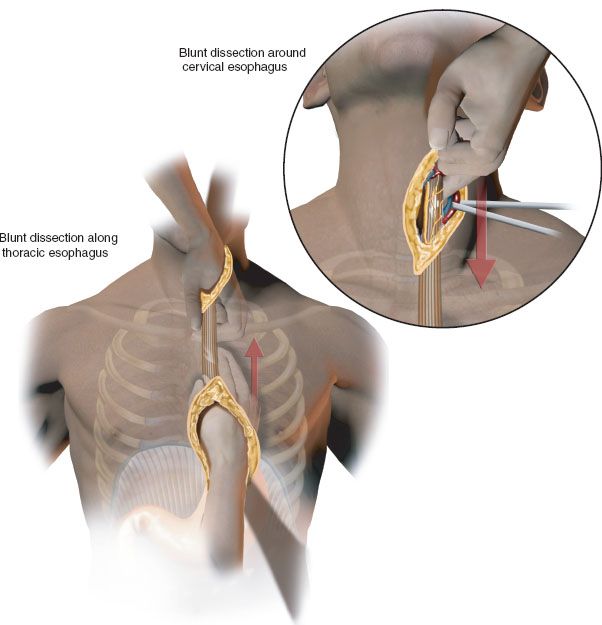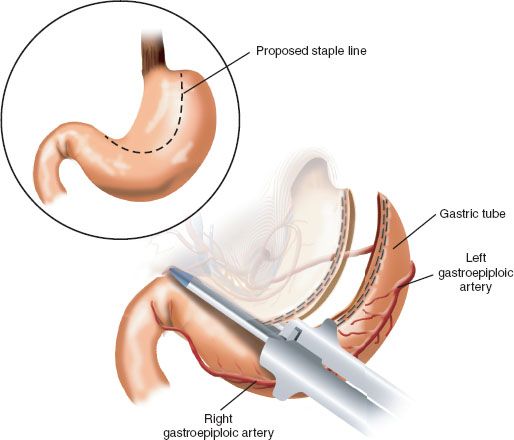FIGURE 31.1 The stomach is shown in its relation to the diaphragm and abdominal viscera. The stomach will be mobilized, fashioned into a tube primarily vascularized by the right gastroepiploic artery and right gastric artery.

FIGURE 31.2 For mobilization into the neck, the stomach is pedicled on its right gastroepiploic and right gastric arteries, and the remainder of the blood vessels are ligated allowing the stretch necessary to reach the pharynx.
Several techniques have been described to optimize the chance of a successful gastric transfer. These include careful preservation of the gastroepiploic arcade during the dissection and meticulous dissection in the region of the gastrocolic ligament, capturing the arcade that is often present in this ligament to supply the proximal stomach. Blunt transhiatal dissection is then carried out from below to mobilize the thoracic esophagus (Fig. 31.3). This can often be done under direct vision to approximately the carina. Similarly, blunt dissection is performed from superiorly to carefully mobilize the superior thoracic esophagus. With blunt dissection, the recurrent laryngeal nerves are preserved laterally as the esophagus is completely mobilized from the gossamer fascia within the mediastinum and chest. A pyloromyotomy or pyloroplasty is often performed to achieve adequate drainage.

FIGURE 31.3 The esophagus is mobilized with blunt dissection from above and below to allow for its removal.
The stomach is transformed into a tube by using surgical staples to transect the extra stomach opposite the gastroepiploic artery. An approximately 4-cm-diameter tube is created to allow it to be passed retrocardiac into the neck (Fig. 31.4). Sutures are utilized to augment the staple line and minimize the chance of a leak into the thorax. The gastric tube is then passed under the heart and up into the neck for anastomosis (Fig. 31.5). Care is taken in the transfer of this tube to minimize traction on the stomach to preserve the blood supply. The diaphragm is then closed to minimize the risk of a diaphragmatic hernia.




